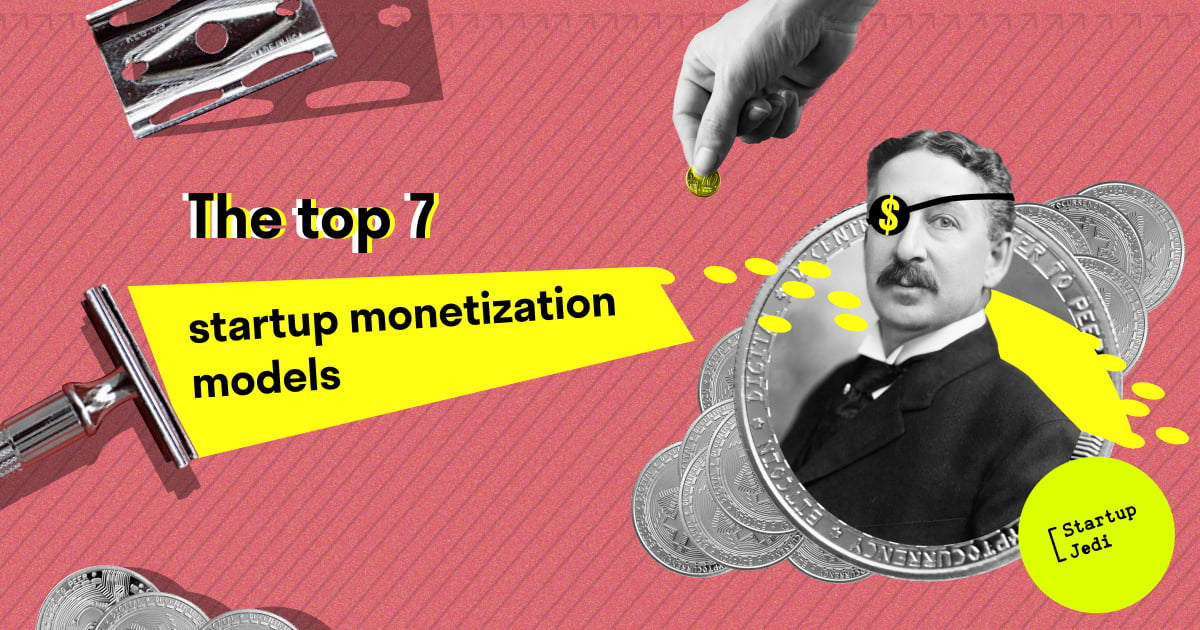
Startup Jedi
We talk to startups and investors, you get the value.

Startup Jedi
We talk to startups and investors, you get the value.
It is important to understand how you can make money from the day you got an idea for your startup. This is a key point for start-up founders: the sooner your project starts making a profit, the better for you — both in terms of raising investment and developing the startup. It is best to use multiple startup monetization models.
...

The easiest way to monetize is making a product and selling it. A variation of this model is markup, or resale, where you buy something from a manufacturer and resell it at a premium.
Wholesales are another kind of sales model. It was initially used by b2b enterprises, acting as suppliers for business customers. Now, this model is also available for the b2c market often used for food, pet food, and household goods. The wholesales model often involves membership fees: companies introduce an annual fee in exchange for access to wholesale merchandise.
This method of monetization is more suitable for selling physical goods, but it is also applicable to services (get10 workouts at the price of 8), digital products (pay for 6 months and get a 12-months subscription).
...

Monetization happens the following way: the user gets a product for some time and pays for using it (for minutes, hours or days). This is a common monetization model for car-sharing services, truck rental, household appliances, and parking lots. Unlike a subscription, this model does not imply a fixed monthly/annual fee, the user pays strictly for the time they are using the product.
...

This model is suitable for startups whose product has unique technological/creative advantages. If you have created a product that others can use to make a profit, sell a license to use that product. Typically, licensing deals are concluded at either a flat rate or a sliding scale, depending on how many times a product/service has been sold using your component. If you want to apply this model, it’s important to make sure your product is unique and can be replicated. This model is used by software developers (Adobe, Microsoft), and producers of various types of content (photo, video, text, music).
...

This method of monetizing a startup is also known as Lock-in. In this model, the main product is relatively cheap — for example, a printer or a shaving machine. But complementary goods are significantly more expensive (cartridges, attachments for machine tools). Competition is a threat to this revenue model, so it is important that the product meets the needs of customers and does not deceive their expectations.
...

The model is often used by music (Yandex.Music) and video services (Netflix) on the Internet, as well as software developers. The advantage of the subscription model is relatively simple revenue predictability. Besides, some customers may forget to cancel their subscription even if they no longer use the product.
A variation of the subscription is the Freemium monetization model when the basic version of the product is free, but you have to pay for the advanced versions.
Another subscription variation is the tiered pricing model. This method allows you to diversify the levels of service for different customer segments: develop several tariff plans with different functions and different prices. Generally, the higher the price, the more features. The tiered pricing model is used by various online business services and software vendors.
...

You monetize your product by charging a commission for using the platform and making transactions. It can be a payment system (Webmoney, PayPal), a marketplace (AliExpress, Amazon), daily deal and coupon aggregators, services, etc. The platform creates conditions for a transaction between a seller and a buye and receives a commission for each transaction.
The broker model is a type of transactional model. If your startup is working on creating a platform that brings together 2 sides of the market, which struggle to reach each other in normal conditions, and allows them to effectively interact with each other, then this model can bring you a good profit. This model is used by Airbnb, helping both owners of vacant apartments and travelers; and WeWork, which provides office space for meetings. You can earn money by charging a commission for using the platform.
Lead generation is a variation of the transactional model in which leads (contacts of potential customers) are collected and sold to interested companies. This happens through collecting applications, preliminary agreements, and mailing. In this case, your customer pays for each lead. As a rule, leads are collected by aggregator resources, where information that is interesting to the user is presented in a user-friendly form (exchange rates in various bank branches; information about discounts, etc.).
...

If your product already has an audience, you can make money from in-app ads. There are a number of mobile advertising models, including:
banner advertising (you can place banner advertising on your site through special services, for example, Apple’s iAd and Google’s AdMob for mobile applications, Yandex.Direct and Google AdWords for websites);
“Interstitial ads” (in mobile applications, it appears, for example, before a new level or after the completion of the next level, as a rule, this is a video);
promoted listing that moves your ad to the top of the list of similar products (suitable for marketplaces and aggregator sites);
advertising-reward — for viewing it, the user receives a bonus, and the owner of the application gets paid;
offerwall — the user can earn a virtual bonus by performing any action from the list. This one is often used in games;
native advertising refers to content that is useful for the user and matches the content you normally share and shows the positive aspects of the promoted product.
...
Sources:
1. The history of Gillette
2. MacRoumors
Facebook: facebook.com/StartupJedi/
Telegram: t.me/Startup_Jedi
Twitter: twitter.com/startup_jedi
Comments